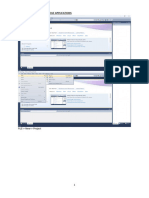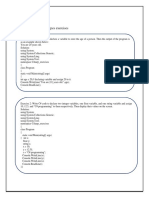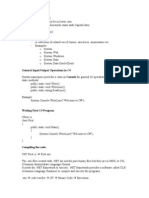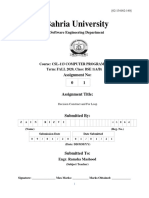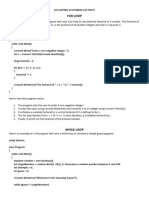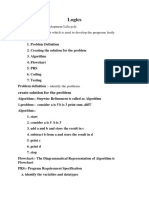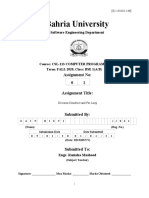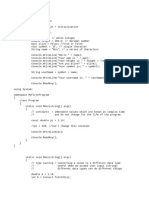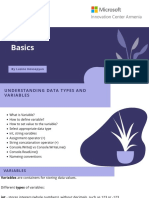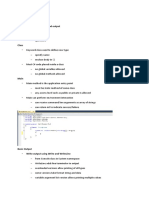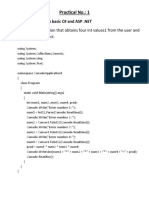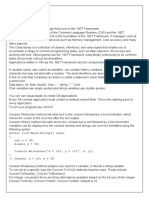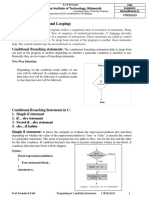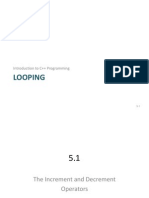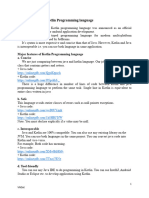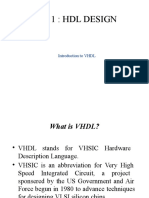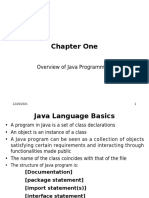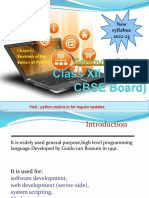0% found this document useful (0 votes)
9 views20 pagesCMT 307 Notes
The document covers fundamental concepts in C# programming, including variables, data types, operators, control structures, arrays, and exception handling. It provides syntax examples, exercises, and explanations for each topic, such as variable declaration, data type categories, and control flow mechanisms like loops and conditional statements. Additionally, it discusses error types and exception handling using try-catch blocks to manage runtime errors.
Uploaded by
jontymaavisCopyright
© © All Rights Reserved
We take content rights seriously. If you suspect this is your content, claim it here.
Available Formats
Download as DOCX, PDF, TXT or read online on Scribd
0% found this document useful (0 votes)
9 views20 pagesCMT 307 Notes
The document covers fundamental concepts in C# programming, including variables, data types, operators, control structures, arrays, and exception handling. It provides syntax examples, exercises, and explanations for each topic, such as variable declaration, data type categories, and control flow mechanisms like loops and conditional statements. Additionally, it discusses error types and exception handling using try-catch blocks to manage runtime errors.
Uploaded by
jontymaavisCopyright
© © All Rights Reserved
We take content rights seriously. If you suspect this is your content, claim it here.
Available Formats
Download as DOCX, PDF, TXT or read online on Scribd
/ 20











